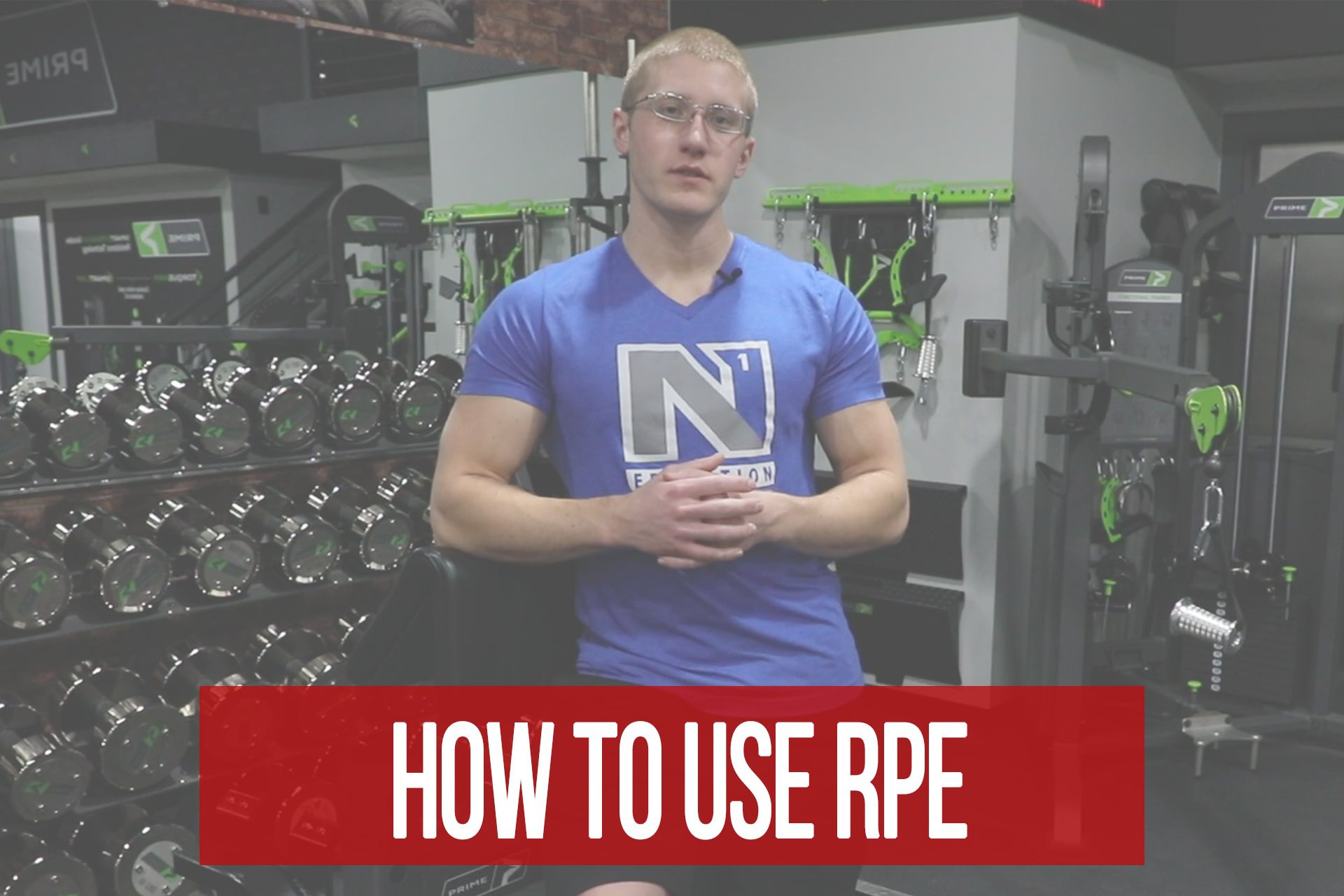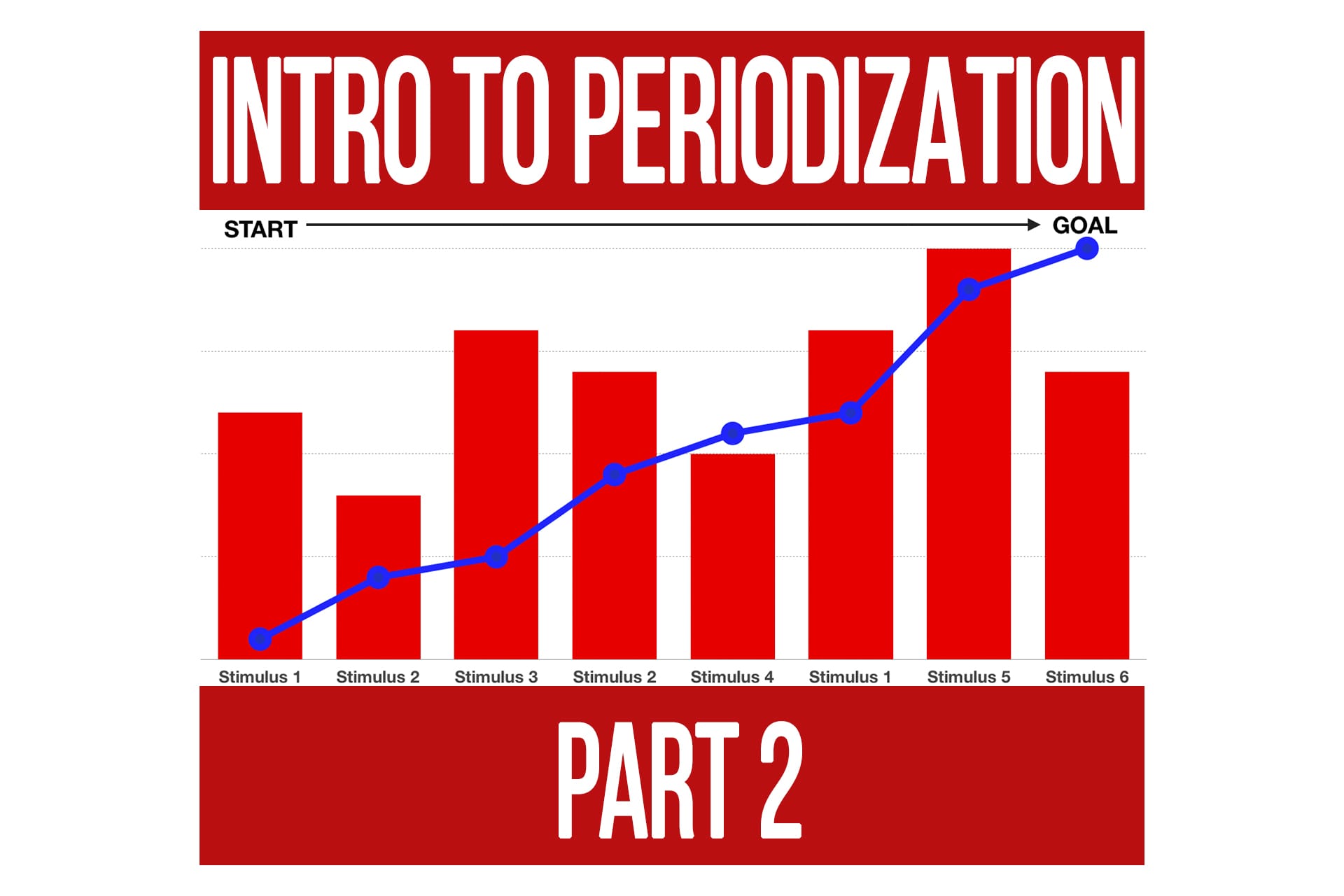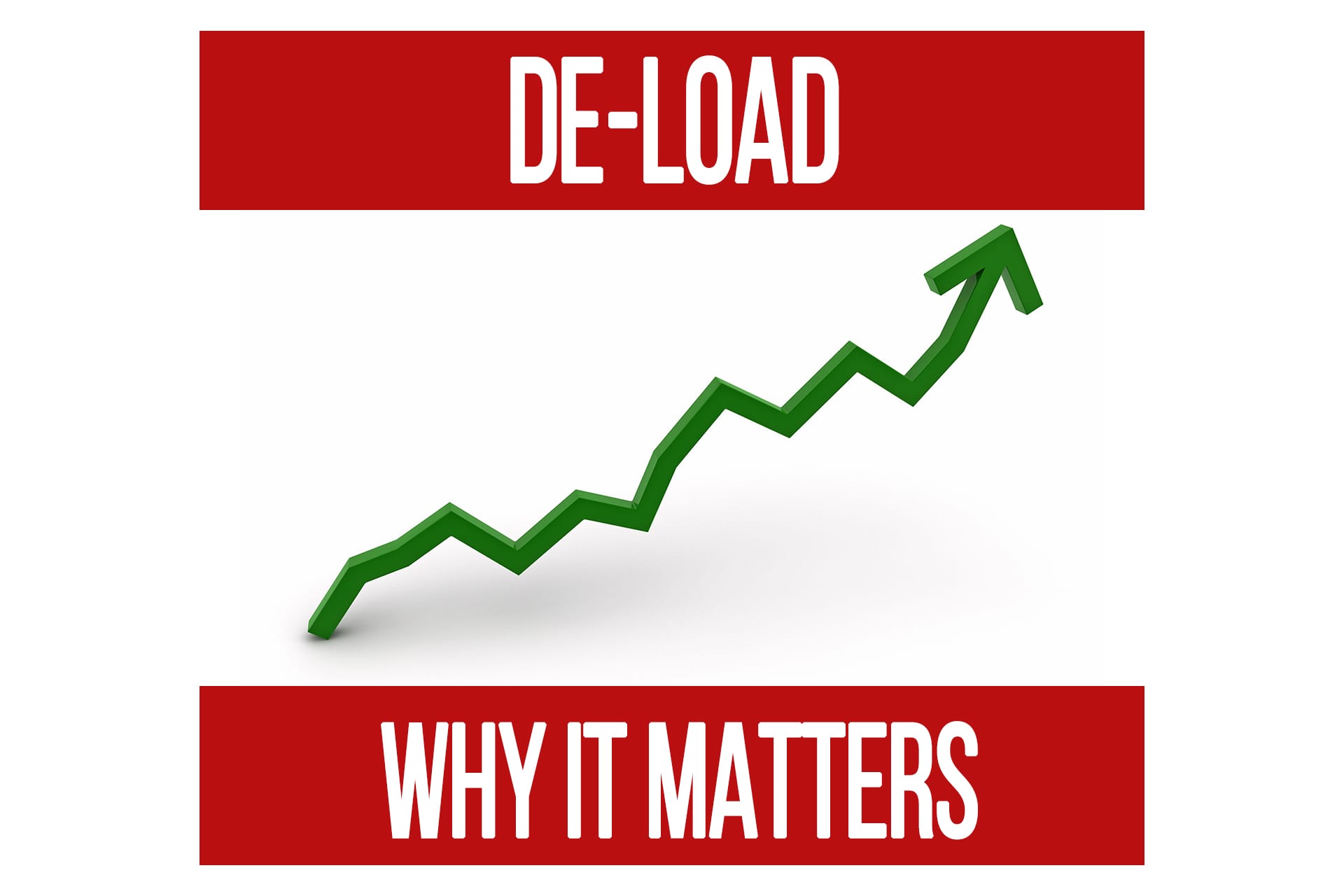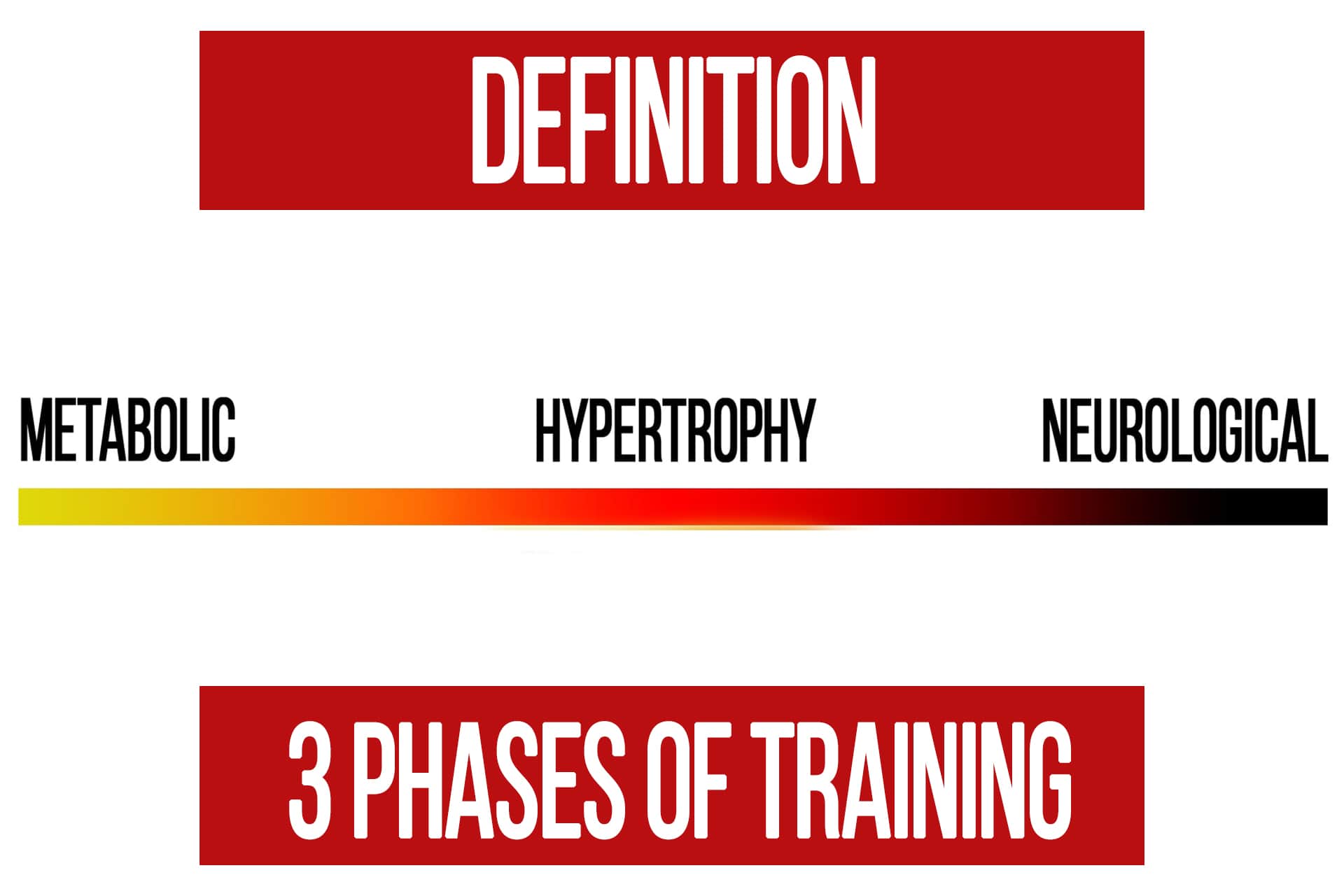Intro to Training Periodization Part 1
n1 training
Training Periodization: The planned progression and ordering of training programs with different variables to result in the fastest possible progress towards an individual’s goal.
Now that we have the general concept, let’s get more specific. That is why you’re here, right?
Something to keep in mind is that there are a lot of methods that can be considered “periodization” in a very general sense, but what I am going to cover in this article is what constitutes optimal periodization for EVERY goal when we look at the details and principles of programming and trainability.
Defining our Terms
This is a complex topic, so let’s first define our terms that we’ll be using.
Stimulus / Stimuli: Training stimuli refers to specific conditions created by the type of training that elicits a particular response from the body. Think of it like a trigger that results in an adaptation.
By manipulating workout variables, we create a certain biological state in the body that stimulates processes to take place which can either positively or negatively affect our progress.
Each of these stimuli can contribute to one or more of our overall goals of fat loss, recomposition, muscle gain, or strength increase.
Read More Here: Training Stimuli – What Are They?
Trainability: The ability to recover from and adapt to a given stimulus at a point in time. It is the difference between how much volume of a stimulus is required to trigger an adaptation and your maximum amount of volume of that stimulus you are able to recover from. Trainability varies by stimulus and is constantly changing as you adapt, recover, and progress.
Let’s Get Specific
If you’ve read about training periodization before from other sources, you may have seen a few things like:
Periodization is…
… increasing the number of sets per body part over time then de-loading by doing less sets for a while, repeat
… undulating your rate of perceived effort (RPE) or the reps in reserve (RIR) from week to week
… undulating your rep range from workout to workout or week to week
While technically those are form a periodization in the broadest sense of the word, if we are looking for optimal periodization, those are all incorrect (or at least very inefficient and misguided) when considering the principles we teach at N1.
This is where understanding the terms we defined above are of paramount importance.
To create a more accurate outline of what good training periodization is, albeit still general enough to apply to every goal and individual, here are the qualifications I would say encompass it:
- Manipulating training variables to achieve a specific stimulus or stimuli during each training program
- Ordering training programs to maximize recovery and performance across each one
- Using multiple programs across all three training phases that contribute to the overall goal of the individual
- Using multiple stimuli within each phase to achieve the fastest possible progress based on your trainability
Trainability is Key
Understanding and adhering to trainability is extremely important.
Why?
I’m glad you asked.
Trainability determines at what point you will eventually stop being able to adequately adapt to a given stimulus. Basically, when you hit your trainability threshold you plateau and may even start seeing certain markers decline. Some might refer to this as “overtraining”, but in this case it is specific to the stimulus created by your workouts.
If you know what the stimulus of your workout is, you can switch to a different one before you hit that point of diminishing returns and still continue making progress with another stimulus that contributes to your goal rather than just doing a week of less sets or at a lower intensity. Neither of which will help you continue making progress and are likely just slowing down your recovery if you’re doing the same type of training since you’re not giving your body a break from that stimulus.
Example Time
Let’s say your goal is fat loss and you’re doing a program that is very locally metabolic. You build up a great pump and burn in the individual muscles. Usually with higher reps and shorter rest periods.
Progress starts out great. You lose a few pounds, are looking leaner, and the workouts feel great.
Then, your weight stops moving and maybe you even start gaining a little. You are starting to look a little bloated or “watery” in the mirror and you start losing those great pumps before the end of the workout. Or maybe you even have a harder time getting a pump at all.
These are all indicators that you have hit your trainability threshold for that local metabolic stimulus. You may have even overdone it a bit and are accumulating some inflammation that is resulting in the decreased pumps, gaining weight, and looking bloated.
This is where the periodization part comes in.
Rather than just doing less sets or working at a lower intensity (lighter loads, same weight), we might suggest that you transition to what we would consider a neurological type of program. Typically this would be associated with a strength goal, but when designed properly with matching nutrition can work great for fat loss too.
The main benefit in this case is that it allows your muscles to recover from the metabolic stress and decrease inflammation. The second benefit is that you can spend a little bit of time improving your ability to contract more muscle tissue in every rep which will enhance your metabolic training when you return to it. This would also be what we consider a de-load for metabolic training. To learn more about the benefits and how to perform a proper de-load, read “De-Load: Why it Matters”.
After enough time to where your muscles have become re-sensitized to local metabolic stress, you could either return to the same program or a different metabolic stimulus. So in this case your periodization would look like this:
Local metabolic training > neurological (strength focused) training > Local metabolic or systemic metabolic training
The nutrition of course will be a huge factor here as the calories and macronutrient ratios would need to change from program to program in order to continue complimenting your fat loss goal.
This is just a very isolated example, but gives you an idea of how you can continue progressing without just doing “less stuff” as your only tool when you start to plateau or things aren’t going well.
Key Points to Take Away
The most valuable things to take away from this article are:
- Good periodization is not just undulating the total number of sets per body part or perceived effort
- Periodization is built around creating specific training stimuli within each program
- De-loading is a part of periodization but doesn’t mean you have to stop making progress
- Proper periodization allows you to reach your long-term goals faster
In part 2, we’ll dive more into the actual effects of training variables, how they contribute to training periodization, and why just varying the number of sets or perceived effort in a workout is illogical once you understand the basic principles.
Definition
Training Periodization: The planned progression and ordering of training programs with different variables to result in the fastest possible progress towards an individual’s goal.
Now that we have the general concept, let’s get more specific. That is why you’re here, right?
Something to keep in mind is that there are a lot of methods that can be considered “periodization” in a very general sense, but what I am going to cover in this article is what constitutes optimal periodization for EVERY goal when we look at the details and principles of programming and trainability.
Defining Our Terms
This is a complex topic, so let’s first define our terms that we’ll be using.
Stimulus / Stimuli: Training stimuli refers to specific conditions created by the type of training that elicits a particular response from the body. Think of it like a trigger that results in an adaptation.
By manipulating workout variables, we create a certain biological state in the body that stimulates processes to take place which can either positively or negatively affect our progress.
Each of these stimuli can contribute to one or more of our overall goals of fat loss, recomposition, muscle gain, or strength increase.
Read More Here: Training Stimuli – What Are They?
Trainability: The ability to recover from and adapt to a given stimulus at a point in time. It is the difference between how much volume of a stimulus is required to trigger an adaptation and your maximum amount of volume of that stimulus you are able to recover from. Trainability varies by stimulus and is constantly changing as you adapt, recover, and progress.
Let's Get Specific
If you’ve read about periodization before from other sources, you may have seen a few things like:
Periodization is…
… increasing the number of sets per body part over time then de-loading by doing less sets for a while, repeat
… undulating your rate of perceived effort (RPE) or the reps in reserve (RIR) from week to week
… undulating your rep range from workout to workout or week to week
While technically those are form a periodization in the broadest sense of the word, if we are looking for optimal periodization, those are all incorrect (or at least very inefficient and misguided) when considering the principles we teach at N1.
This is where understanding the terms we defined above are of paramount importance.
To create a more accurate outline of what good training periodization is, albeit still general enough to apply to every goal and individual, here are the qualifications I would say encompass it:
- Manipulating training variables to achieve a specific stimulus or stimuli during each training program
- Ordering training programs to maximize recovery and performance across each one
- Using multiple programs across all three training phases that contribute to the overall goal of the individual
- Using multiple stimuli within each phase to achieve the fastest possible progress based on your trainability
Trainability is Key
Understanding and adhering to trainability is extremely important.
Why?
I’m glad you asked.
Trainability determines at what point you will eventually stop being able to adequately adapt to a given stimulus. Basically, when you hit your trainability threshold you plateau and may even start seeing certain markers decline. Some might refer to this as “overtraining”, but in this case it is specific to the stimulus created by your workouts.
If you know what the stimulus of your workout is, you can switch to a different one before you hit that point of diminishing returns and still continue making progress with another stimulus that contributes to your goal rather than just doing a week of less sets or at a lower intensity. Neither of which will help you continue making progress and are likely just slowing down your recovery if you’re doing the same type of training since you’re not giving your body a break from that stimulus.
Example Time!
Let’s say your goal is fat loss and you’re doing a program that is very locally metabolic. You build up a great pump and burn in the individual muscles. Usually with higher reps and shorter rest periods.
Progress starts out great. You lose a few pounds, are looking leaner, and the workouts feel great.
Then, your weight stops moving and maybe you even start gaining a little. You are starting to look a little bloated or “watery” in the mirror and you start losing those great pumps before the end of the workout. Or maybe you even have a harder time getting a pump at all.
These are all indicators that you have hit your trainability threshold for that local metabolic stimulus. You may have even overdone it a bit and are accumulating some inflammation that is resulting in the decreased pumps, gaining weight, and looking bloated.
This is where the periodization part comes in.
Rather than just doing less sets or working at a lower intensity (lighter loads, same weight), we might suggest that you transition to what we would consider a neurological type of program. Typically this would be associated with a strength goal, but when designed properly with matching nutrition can work great for fat loss too.
The main benefit in this case is that it allows your muscles to recover from the metabolic stress and decrease inflammation. The second benefit is that you can spend a little bit of time improving your ability to contract more muscle tissue in every rep which will enhance your metabolic training when you return to it. This would also be what we consider a de-load for metabolic training. To learn more about the benefits and how to perform a proper de-load, read “De-Load: Why it Matters”.
After enough time to where your muscles have become re-sensitized to local metabolic stress, you could either return to the same program or a different metabolic stimulus. So in this case your periodization would look like this:
Local metabolic training > neurological (strength focused) training > Local metabolic or systemic metabolic training
The nutrition of course will be a huge factor here as the calories and macronutrient ratios would need to change from program to program in order to continue complimenting your fat loss goal.
This is just a very isolated example, but gives you an idea of how you can continue progressing without just doing “less stuff” as your only tool when you start to plateau or things aren’t going well.
Key Point Summary
The most valuable things to take away from this article are:
- Good periodization is not just undulating the total number of sets per body part or perceived effort (RIR, RPE, etc)
- Periodization is built around creating specific training stimuli within each program
- De-loading is a part of periodization but doesn’t mean you have to stop making progress
- Proper periodization allows you to reach your long-term goals faster
In part 2, we’ll dive more into the actual effects of training variables, how they contribute to periodization, and why just varying the number of sets or perceived effort in a workout is illogical once you understand the basic principles.
Have a Question for Us?
Please Log In to Submit Your Question

Popular Pages
Learn & Train With Us
Add N1 Training to your Homescreen!

Please log in to access the menu.





